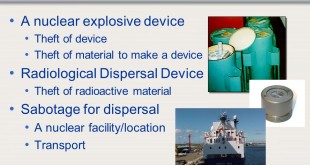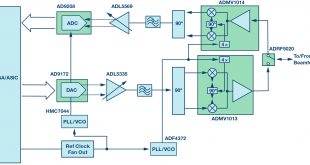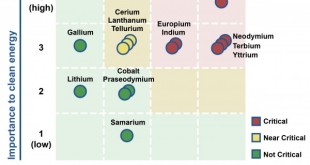A rocket is defined as a technologically advanced reaction motor that can carry its oxidant to propel a launch vehicle. A reaction motor is used as a propulsion device to generate a forward push by expelling the rocket structure in a backward direction. A missile is an unmanned rocket vehicle. …
Read More »Nuclear Power and storage technologies for marine Propulsion and floating nuclear power plants
The International Energy Agency’s has found that the accelerating demand for electricity – due to a growing global population and rising levels of affluence – is on course to outpace the growth of renewable energy and increase reliance on fossil fuels. The International Maritime Organization has adopted mandatory measures …
Read More »Nuclear Security Threat due to emerging technologies like cyber-warfare, artificial intelligence, precision targeting, drones and hypersonic delivery systems
The potential use of nuclear weapons poses the greatest danger to U.S. security. According to the U.S. National Security Strategy, Recently Nuclear threat is rising again due to nuclear arms race in asia, modernisation of nuclear arsenal by Major and regional powers, statement by countries like North Korea to use …
Read More »lubricants for electric vehicles and hybrids
Transport is responsible for around 23% of energy-related carbon dioxide emissions globally. This is expected to double by 2050. Motor vehicles also put a burden on society, especially in urban environments where they are chiefly responsible for noise and air pollution. Electric vehicles (EVs) have been considered as critical technology for …
Read More »Laser ignition technology to enable scramjet propulsion for Hypersonic aircraft and spacecraft
Vehicles propelled by rocket engines are commonly called rockets. Rocket vehicles carry their own oxidizer, unlike most combustion engines, so rocket engines can be used in a vacuum to propel spacecraft and ballistic missiles. Compared to other types of jet engines, rocket engines are the lightest and have the highest …
Read More »Superconducting (SC) materials enable light-weight and energy efficient electric propulsion system for Aircrafts, ships and satellites to future interplanetary missions
A new power revolution is going on in orbit – that of electrical propulsion for satellites. An ion thruster is a form of electric propulsion used for spacecraft propulsion. It creates thrust by accelerating ions with electricity. As the ionised particles escape from the aircraft, they generate a force moving …
Read More »Hybrid marine propulsion system technology for smart ships
Marine propulsion is the mechanism or system used to generate thrust to move a ship or boat across water. At present, 90% of the sea-going naval ship are diesel-powered. To achieve the safe upper limit for global warming of 1.5 degrees Celsius, ‘all ships designed and built today must operate in …
Read More »Millimeter wave (mmWave) power amplifiers enable mmWave Radios for 5G and Satellite Communications
Millimeter waves are electromagnetic signals with frequencies ranging from 30 to 300 GHz that correspond to wavelengths of 10 to 1 mm in the free space. Electromagnetic waves in the millimeter-wave band (with frequencies between 30 and 300 GHz, or wavelengths between 10 and 1.0 mm) have attractive characteristics. One of …
Read More »China establishing control over supply of critical materials of Renewable Energy and shall dictate future global energy geopolitics
The current global energy system is both unsustainable and inequitable, and large changes are required quite rapidly if there is to be any chance of limiting the effects of global warming. The global community has agreed on sustainable development goals attempting to integrate and balance the three dimensions of economic, …
Read More »Optimized Alkaline anion exchange membranes ( AAEMs) enhance efficiency of alkaline exchange membrane fuel cells (AEMFCs), that convert fuels to electricity using nonplatinum electrode catalysts.
Since the Industrial Revolution, the environmental impacts of energy have posed a concern. Recently, this has driven researchers to search for viable options for clean and renewable energy sources. Due to its affordability and environmental friendliness, hydrogen is a feasible alternative to fossil fuels for energy applications. However, due to its …
Read More » International Defense Security & Technology Your trusted Source for News, Research and Analysis
International Defense Security & Technology Your trusted Source for News, Research and Analysis





